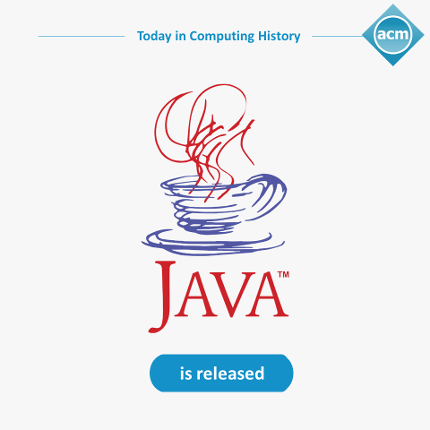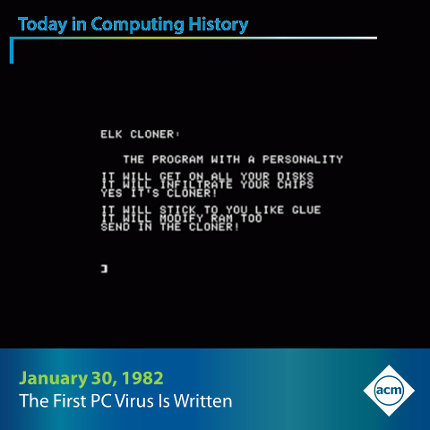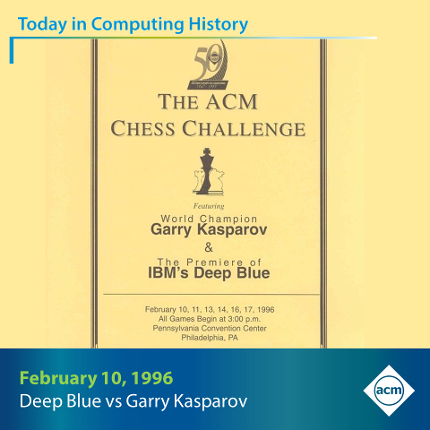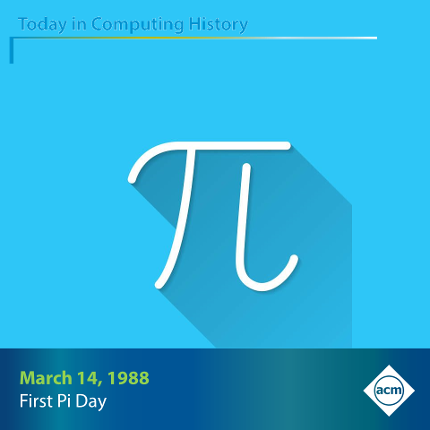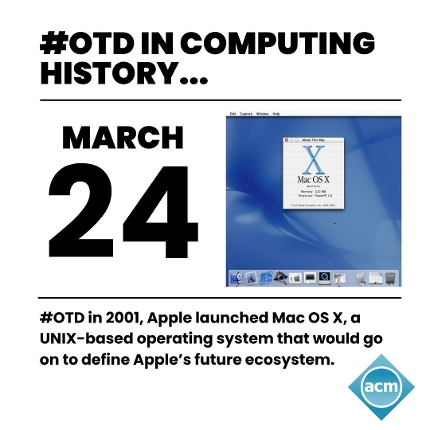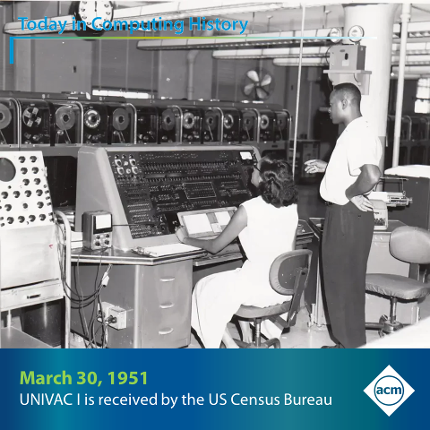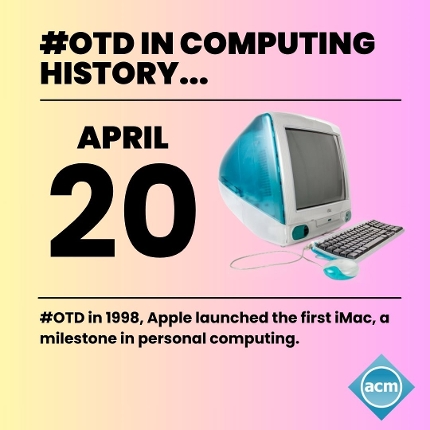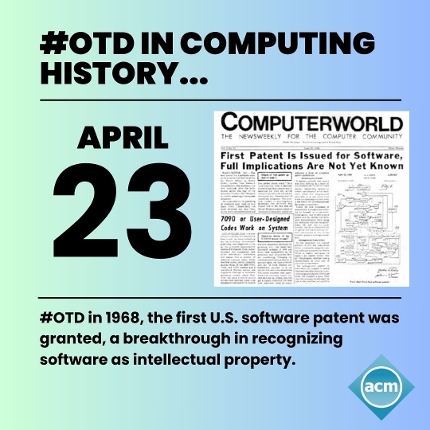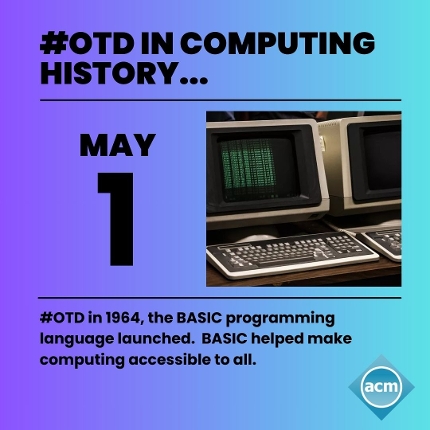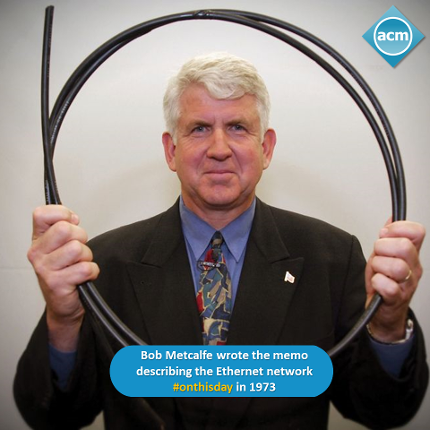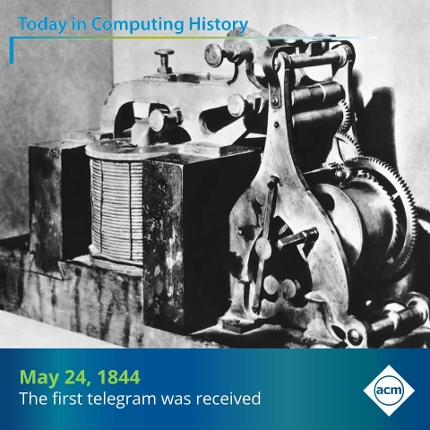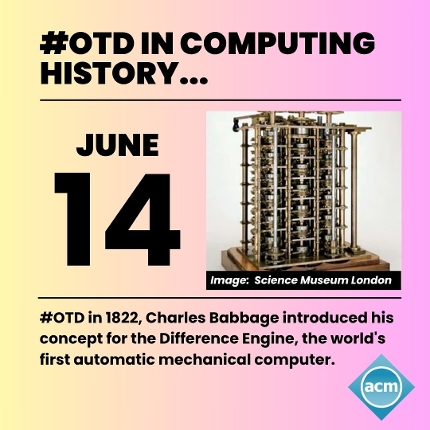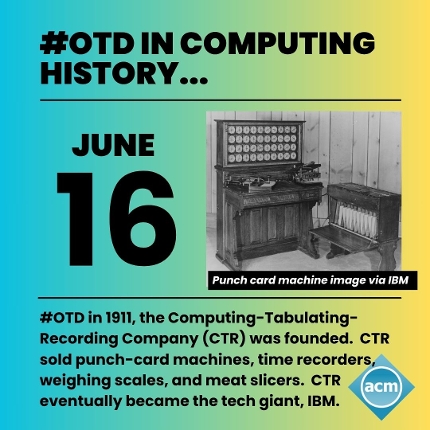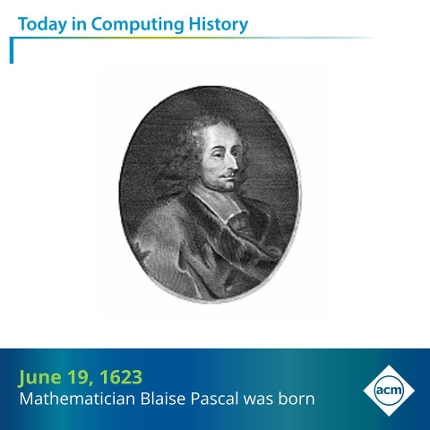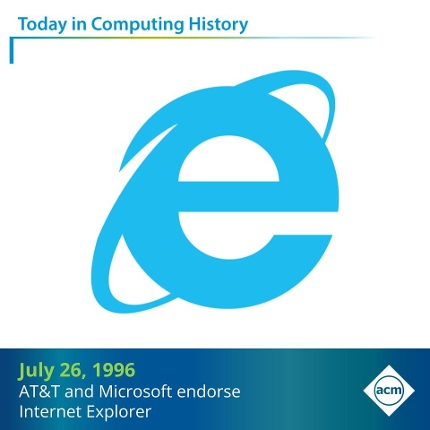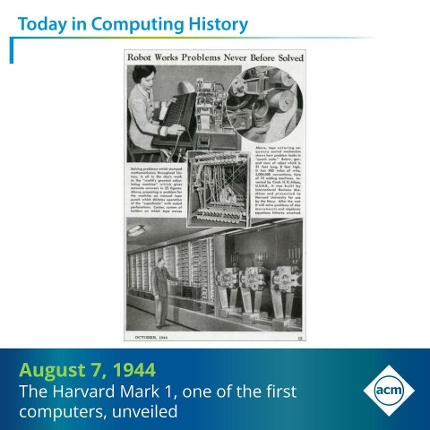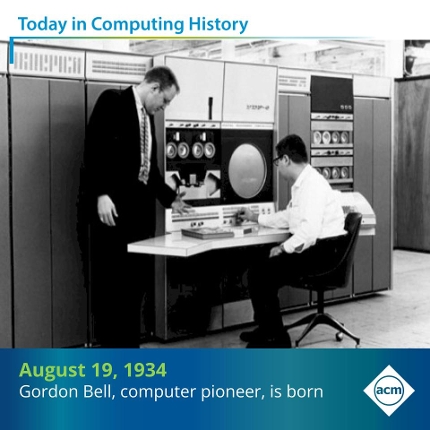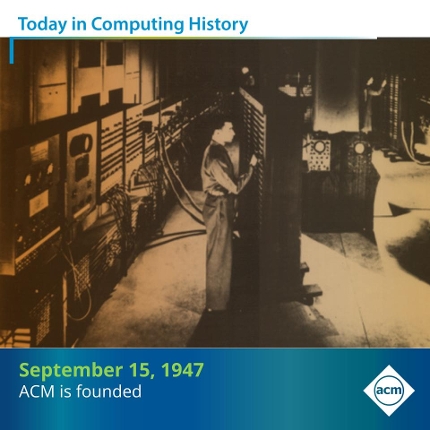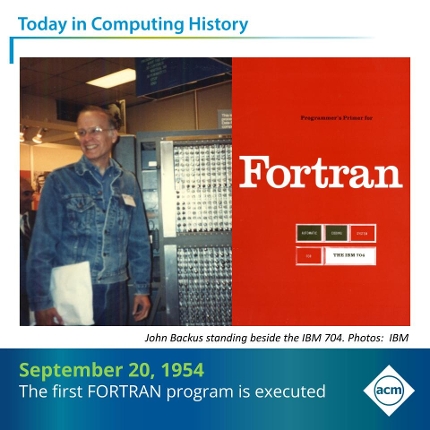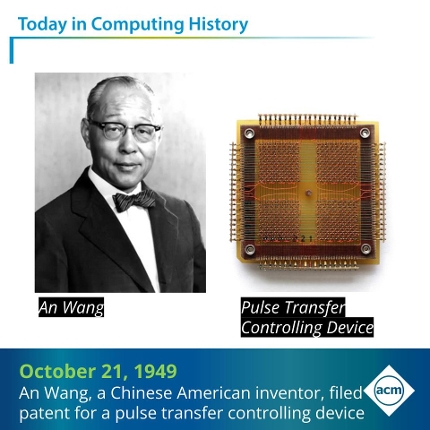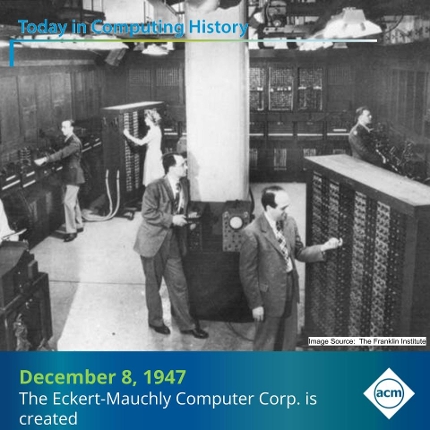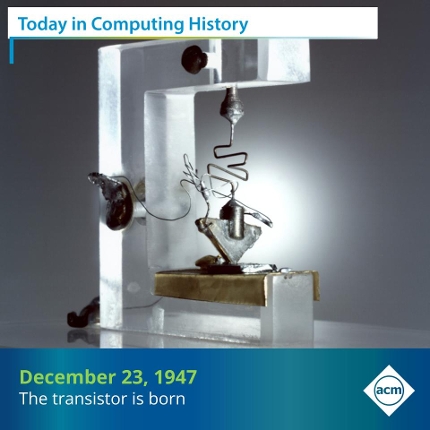On This Day in Computing History - Key Events and Milestones
Welcome to "On This Day in Computing History," where ACM celebrates pivotal moments that have shaped technology and highlight key milestones, from early inventions to today's advancements. Join us as we honor the visionaries and transformative events that continue to inspire the world of computing, one milestone at a time.
January
January 3, 2009
Bitcoin is created
On this day in 2009, the pseudonymous programmer Satoshi Nakamoto mines the first Bitcoin block--the Genesis Block--and launches the world's first feasible decentralized cryptocurrency and payment system. Unlike traditional money, Bitcoin is created, distributed, traded, and stored using a decentralized ledger system known as a blockchain.
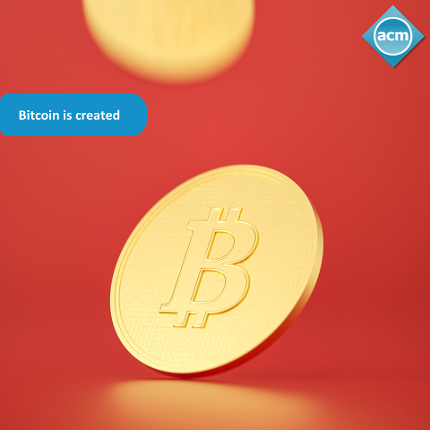
January 19, 1983
Apple Lisa
Have you heard of the Apple Lisa? On this day in 1983, a year before the Macintosh, the Apple Lisa was introduced to the world. As the first personal computer with a graphical user interface (GUI) and a mouse, the Lisa was a groundbreaking achievement in making computers more user-friendly. While its high price held it back, many of its innovations were refined and carried forward into the Macintosh, shaping the future of personal computing.
January 23, 1996
Java is released
On this day in 1996, the first version of Java, a programming language, was released. Originally designed for interactive television, its "write once, run anywhere" feature made it ideal for Internet programming. Initially called "Greentalk" and later "Oak," it was named "Java" after an island in Indonesia where the first coffee was produced, hence the logo.
January 30, 1982
The first PC virus is written
On this day, in 1982, a 15-year-old named Richard Skrenta writes the first large-scale, self-spreading PC virus code, which is 400 lines long and disguised as an Apple II boot program called "Elk Cloner."
February
February 8, 2005
Google Maps is launched
In 2004, Google acquired Where 2 Technologies and Keyhole, and the new team of 50 people set out building a digital map that was searchable, scrollable, and zoomable. Google Maps launched on this day a year later, revolutionizing the way we navigate our world.
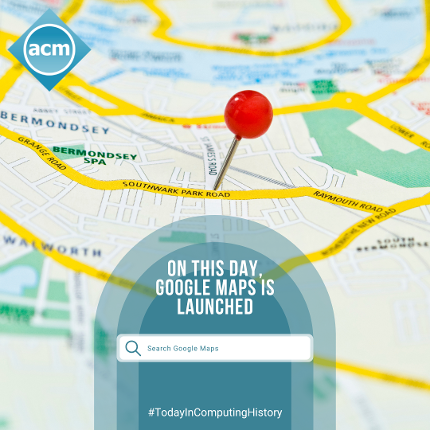
February 10, 1996
Deep Blue VS Garry Kasparov
On this day in 1996, IBM's Deep Blue premieres at the ACM Chess Challenge in a six-game match with world champion Garry Kasparov. Although Kasparov won by 4-2, he would be defeated in a rematch in 1997, which marked the first defeat of a reigning world chess champion by a computer.
February 7, 1958
DARPA
In 1958, the United States established the Defense Advanced Research Projects Agency (DARPA) in direct response to the Soviet Union’s launch of Sputnik. The first man-made satellite sparked fears that the U.S. was losing its technological and strategic edge in the Cold War. DARPA’s mission was clear: “to prevent and create strategic surprise,” ensuring the U.S. remained at the forefront of innovation in defense and computing. This urgency to reclaim superiority laid the groundwork for breakthroughs that shaped modern technology, including the foundations of the internet.
February 14, 1946
ENIAC is unveiled
ENIAC, the first fully electronic computer, is unveiled by its creators, J. Presper Eckert and John Mauchly, at the University of Pennsylvania. Occupying over 1,5000 square feet and weighing 30 tons, it calculated 5,000 operations per second, 1,000 times faster than its contemporaries.
Six women were selected to configure and interconnect ENIAC's components according to required computational functionality, handle punch-card input, troubleshooting, and even replace vacuum tubes. Their contribution to the program wasn't acknowledged until the mid 1980s.
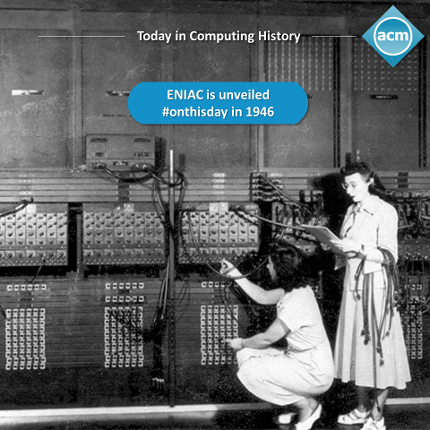
February 25, 1959
APT is demonstrated
On this day in 1959, the Automatically Programmed Tool (APT) is demonstrated at MIT. APT is a computer programming language used to generate instructions for numerically controlled machine tools. This early language was used widely through the 1970s and is still a standard internationally.
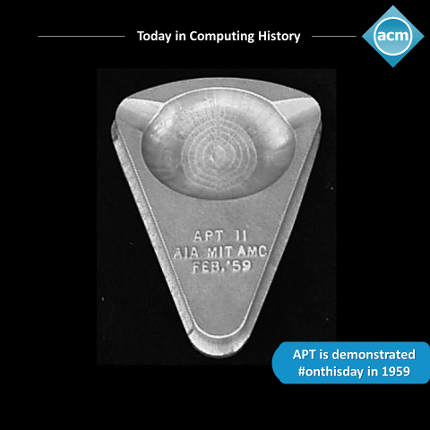
March
March 4, 1956
An Wang sells core memory patent to IBM
Consisting of "tiny donuts" of magnetic material strung on wires into an array, Magnetic Core Memory became the principal method of random access storage from the 50s until the 70s, when it was replaced by semiconductor memory chips. On this day in computing history, in 1956, its inventor An Wang sold his patent to IBM. Later it was perfected by Jay Forrester and used in MIT's Whirlwind.

March 5, 1975
Homebrew Computer Club meets for the first time
On this day in 1975, the Homebrew Computer Club held its first meeting in its co-founder Gordon French's garage in Menlo Park, California. A forum for trading electronic parts and ideas, it attracted a group of computer hobbyists, including Steve Wozniak, Steve Jobs, and several future leaders in personal computers.
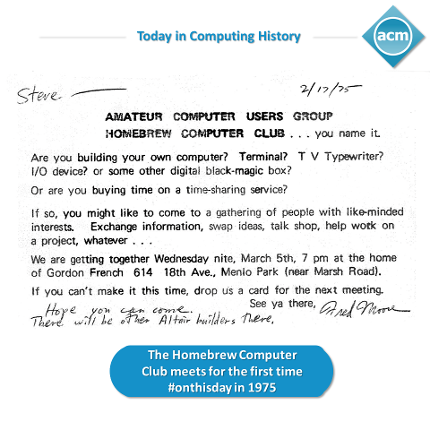
March 14, 1988
First Pi Day is celebrated
Happy Pi Day! Created by the Greek mathematician Archimedes in 250 B.C., the constant–the ratio of the circumference of a circle to its diameter–gave its name to March 14 at San Francisco's Exploratorium in 1988. To this day scientists are still trying to learn more digits of pi. How many can you memorize?
March 15, 1985
Symbolics.com, The First .com Domain
In 1985, Symbolics, Inc., a computer manufacturer based in Cambridge, Massachusetts, registered the world’s first .com domain name: Symbolics.com. At the time, the internet was mostly used by researchers and government agencies. This milestone marked the beginning of the internet’s transition into a commercial space. Few could have imagined that this simple three-letter suffix would become the backbone of business, communication, and daily life
March 24, 2001
MAC OS X
In 2001, Apple launched Mac OS X, a UNIX-based operating system that redefined personal computing. At the time, Apple was recovering from years of decline, and this release marked a new era for the company. With its Aqua interface, Dock, and Quartz graphics engine, Mac OS X introduced a fresh, modern user experience. This milestone laid the foundation for macOS, which now powers everything from iMacs to MacBooks. This operating system would go on to shape not just desktop computing, but also influence iOS and iPadOS, defining the future of Apple’s ecosystem.
March 25, 1985
Microsoft launched Excel
In 1985, Microsoft launched Excel, the groundbreaking spreadsheet software that would revolutionize how we organize, analyze, and visualize data. Originally created for the Macintosh, Excel quickly became the industry standard for financial professionals, analysts, and beyond. Its powerful tools, user-friendly interface, and innovative features helped redefine productivity in the digital age. Excel’s evolution over the years has made it an indispensable part of both business and personal tasks.
March 25, 1992
Excel 4.0 is released
Happy birthday to Excel 4.0, released on this day in 1992! Compared to its predecessors, its new features included AutoFill and a large number of functions and shortcuts. Along with other practical applications developed by Microsoft and other companies, it made personal computers more appealing to home and office users and shaped the way we work.
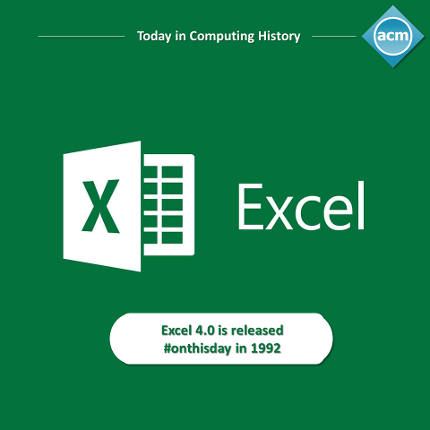
March 30, 1951
UNIVAC I is received by the US Census Bureau
The first commercial general-use computer, UNIVAC I was developed for the US Census Bureau and is delivered on this day in 1951. Later next year it would be used to predict the result of the 1952 Presidential election.
April
April 4, 1994
Marc Andreessen Founds Netscape with Jim Clark
On this day in 1994, University of Illinois graduate Marc Andreessen and Silicon Graphics' Jim Clark created Mosaic Communications Corporation. By December, they renamed the company Netscape Communications and launched Netscape Navigator 1.0, which went on to become the de facto browser in early 1995. Although its market dominance didn't last long, its tense rivalry with Microsoft paid the way for innovation in the browsing space.
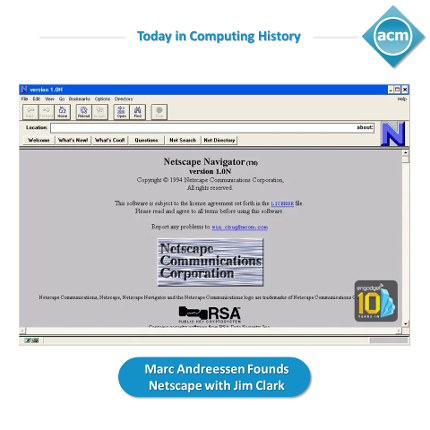
April 7, 1964
IBM launches the System 360 mainframe architecture
IBM launched the revolutionary System/360 mainframe architecture. Named “360” to reflect its goal of serving all types of customers, it transformed business computing and became one of the most successful tech projects of its time. Fred Brooks, the Turing Award-winning computer scientist who led the System/360 project, also coined the term “computer architecture” to describe the structure and behavior of computing systems—distinct from their hardware implementation.
April 16, 1959
LISP is unveiled by John McCarthy and his team
On this day in 1959, "LISP," the first AI programming language, was introduced to the world by computer pioneer John McCarthy and his team. Specifically designed to facilitate research in AI, the language was distinctive for its simplicity and flexibility and its ability to manipulate symbolic expressions.
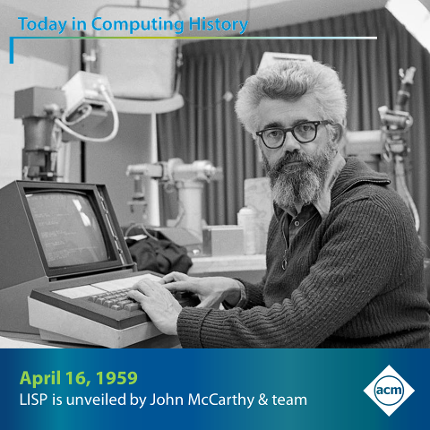
April 19, 1957
Researchers run the first FORTRAN program
One of the oldest high-level programming languages still in use today, FORTRAN, or FORMula TRANslator, ran for the first time at Westinghouse on this day in 1957. Developed by the IBM team led by ACM Turing Laureate John Backus, it made programming more intuitive and was quickly adopted on a wide scale.
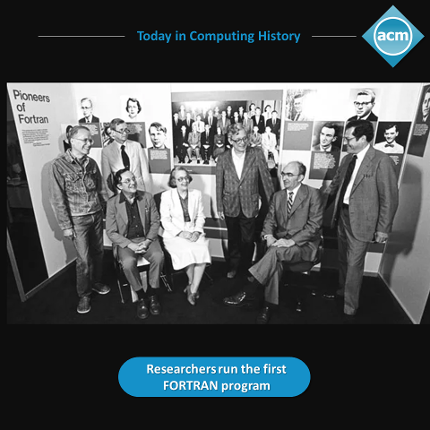
April 20, 1998
First iMAC
In 1998, the first iMac was released. The iMac was a breakthrough in personal computing. Its colorful, all-in-one design stood out from the typical beige PCs of the time, helping to revive Apple’s brand and reshape the tech landscape.
April 23, 1968
The first U.S. software patent was granted
Patent No. 3,380,029 was issued to Martin Goetz for a method of sorting data on a computer—a breakthrough in recognizing software as intellectual property. At a time when software was typically bundled for free with hardware, this marked a major shift in how code was valued and protected. Goetz’s work helped lay the foundation for today’s software industry, where innovation in algorithms, processes, and code is not only recognized but commercially protected. The decision was controversial then—and still sparks debate now—but it paved the way for the legal frameworks that support tech entrepreneurship, licensing, and digital rights today. Martin Goetz later called it “the worst patent ever written”—but also one of the most important.
May
May 1, 1964
BASIC Programming Language Launched
Two Dartmouth professors launched BASIC—the Beginner’s All-purpose Symbolic Instruction Code. Designed to make programming accessible to non-scientists, BASIC opened the door to computing for an entire generation of students, hobbyists, and eventually home computer users. It helped democratize technology.
May 7, 1954
IBM 704 is announced
On this day in 1954, the IBM 704 was announced. The first mass-produced computer to incorporate indexing and floating point arithmetic, it became a commercial success, with both FORTRAN and LISP were first developed for it.
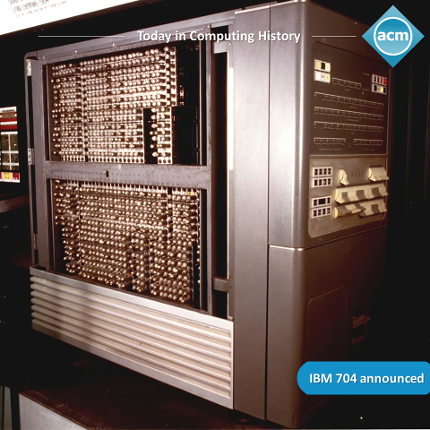
May 22, 1973
Bob Metcalfe writes the memo describing the Ethernet network
On this day in 1973, Bob Metcalfe, a member of the research staff at Xerox Palo Alto Ranch Center, wrote the now famous memo describing the Ethernet network system he had been working on to interconnect advanced computer workstations. Patented in 1975 as a "multipoint data communication system with collision detection," Ethernet is now the most widely-installed LAN protocol and an international computer industry standard.
May 22, 1980
Namco Released Pac-Man
The original Pac-Man made its debut and quickly became more than just an arcade hit—it marked a milestone in computing. It demonstrated early AI with ghosts that followed distinct behavioral algorithms, pushed real-time processing on limited hardware, and showcased intuitive, user-friendly design. It also was an example of early cross-platform development. A lot of fun, and a leap forward in computing!
May 24, 1844
The first telegram is received
On this day in 1844, Samuel F.B. Morse inaugurated the world's first commercial telegraph line. In this historical moment, he sent the message “What hath God wrought?” from Washington to Baltimore, marking a significant advancement in communication technology. Morse's telegraph system revolutionized communication, aiding American expansion.
June
June 5, 1833
Ada Lovelace meets Charles Babbage
Ada Lovelace met mathematician Charles Babbage, at a party on this day in 1833 and was entranced when Babbage demonstrated his work to her. Babbage had grand plans for a computer called the Analytical Engine, for which Lovelace wrote what many consider to be the first algorithm.
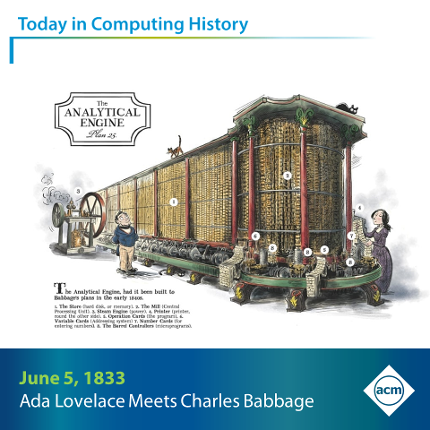
June 8, 1978
IBM 8086
Today in 1978, the IBM 16-bit 8086 chip was introduced. In 1982, the original IBM PC shipped with a version of the 8086 – the 8088, ushering in a new age of PC computing. The current line of Intel “Core” processors are still based on the same architecture that was introduced with the 8086.
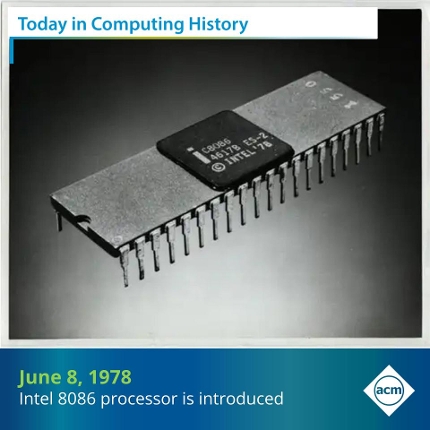
June 14, 1822
Charles Babbage introduced the Difference Engine
Charles Babbage introduced his concept of the Difference Engine, the world's first automatic mechanical computer. Babbage designed the Difference Engine with 25,000 precision-engineered parts to calculate and tabulate polynomial functions. Its brilliant design relied solely on repeated addition, cleverly eliminating the need for mechanical multiplication or division, operations that were far more complex to implement at the time.
June 15, 1987
The first GIF is released
Stephen Wilhite was working at CompuServe in 1987 when he and his team created a new format that allowed users to share compressed image files with ease. The first GIF, short for graphics interchange format, was released on this day. The looping animal format went on to become "a universal language for conveying humor, sarcasm and angst on social media and in instant messages."
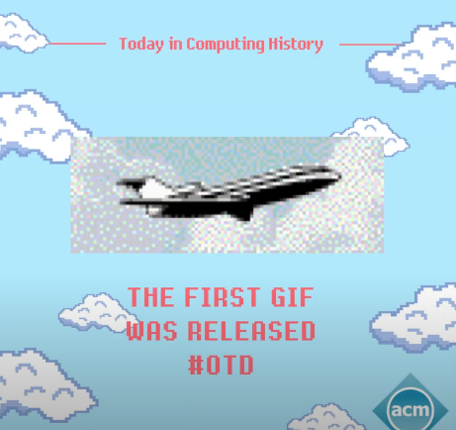
June 15, 1993
Version 1.0 of Adobe Acrobat, the first software program capable of reading PDFs, launched on this day in 1993. PDF, or Portable Document Format allows the user to view a file precisely — down to the pixel, essentially, of what the author had intended.
June 16, 1911
Computing-Tabulating-Recording Company (CTR) was founded
The Computing-Tabulating-Recording Company (CTR) was founded. CTR would one day become a global tech giant, IBM. CTR brought together companies specializing in punch-card machines, time recorders, weighing scales, and meat slicers. Who knew such humble beginnings would evolve into the leader of the computing revolution. By 1924, under the leadership of Thomas J. Watson, CTR was renamed International Business Machines (IBM).
June 19, 1623
Blaise Pascal
Do you know the name Blaise Pascal? He was a French mathematician, philosopher, scientist, inventor, and theologian who was born on this day in 1623. His most well-known contribution to computing was his invention of the Pascaline, a digital calculator that he designed to help his father in his tax-collecting work.
July
July 4, 1956
Keyboard input on computers debuts on MIT Whirlwind
On this day in 1956, MIT's Whirlwind computer became the first to allow its user to enter commands through a keyboard, a revolutionary solution at a time when instructions were communicated by inserting punched cards and changing dials and switches.
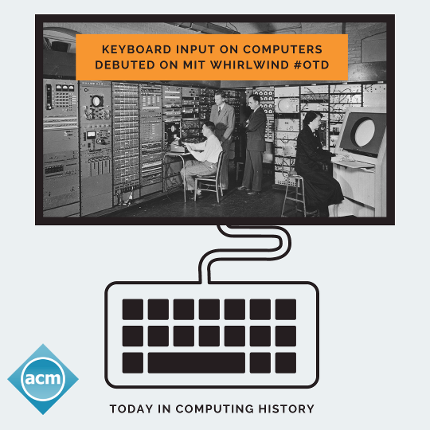
July 7, 1752
Joseph-Marie Jacquard is born
Today we celebrate the birthday of Joseph-Marie Jacquard, born on July 7, 1752. Jacquard's contributions to the world of textiles might seem far removed from computing, but his invention of the Jacquard loom had a profound impact on the development of modern computers. Introduced in 1804, the Jacquard Loom used punch cards to control the weaving of patterns in textiles. Each card represented a sequence of operations, allowing complex designs to be woven automatically. The concept of using punch cards for programmable machines was revolutionary and laid the groundwork for later developments in computing.
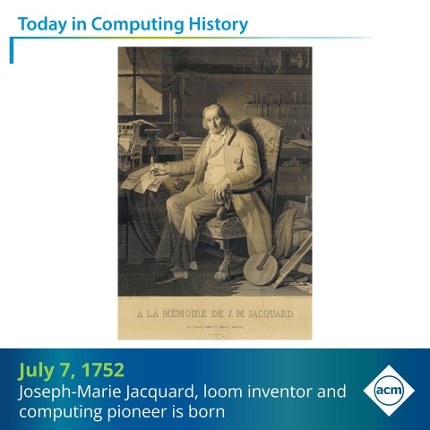
July 20, 1969
Apollo Moon Landing
A giant leap for mankind! In 1969, Apollo 11 touched down on the Moon, and Neil Armstrong became the first human to set foot on its surface. His words, "That's one small step for man, one giant leap for mankind," echoed across the globe, uniting humanity in awe and wonder. With the help of computers and people like Margaret Hamilton who built the software system, this monumental achievement was possible.
July 26, 1996
AT&T and Microsoft Together Promote Internet Explorer
In computing history, in 1996, AT&T and Microsoft formed a groundbreaking alliance to promote Internet Explorer, marking a pivotal moment in internet history. This collaboration aimed to enhance web browsing experiences and accelerate the internet's growth. By bundling Internet Explorer with AT&T WorldNet, they challenged the dominance of Netscape Navigator, fueling the browser wars of the late '90s. This alliance not only shaped the competitive landscape of web browsers but also set the stage for the rapid expansion of the internet, influencing how we navigate the digital world today.
AUGUST
August 7, 1944
Harvard Mark 1
On this day in 1944, The Harvard Mark 1, also known as the IBM Automatic Sequence Controlled Calculator (ASCC), was officially presented to Harvard University. The Mark I was one of the earliest electromechanical computers, developed by IBM and Harvard University under the direction of Howard Aiken. The Mark I was a colossal machine, stretching 51 feet long and weighing nearly five tons. It contained approximately 750,000 components, including switches, relays, rotating shafts, and clutches, and was capable of performing three additions or subtractions per second. It played a crucial role during World War II, particularly in calculations for the United States Navy.
August 19, 1934
Gordon Bell is born
On this day in 1939, a pioneer of modern computing, Gordon Bell, was born. His personal computer prototype bridged the world between room-size mainframes and the modern desktop. Called the “Frank Lloyd Wright of computers” by Datamation magazine, Bell was the master architect in the effort to create smaller, affordable, interactive computers that could be clustered into a network. In 1985 Bell explained his formula for repeated technology successes to ComputerWorld, “The trick in any technology,” he said, “is knowing when to get on the bandwagon, knowing when to push for change, and then knowing when it’s dead and time to get off.”
August 28, 2009
End of AppleTalk
On this day in 2009, Apple Inc. officially discontinued support for AppleTalk. Introduced in 1985, AppleTalk offered a simplified network communication for Apple computers. Popular in schools, small businesses, and creative industries, AppleTalk enabled easy file sharing and printer access with minimal configuration. Its end marked the industry’s shift to standardized protocols like TCP/IP and reflected Apple’s focus on broader compatibility. By embracing modern networking standards, Apple paved the way for more integrated and seamless user experiences across different platforms.
SEPTEMBER
September 9, 1945
The First Computer “Bug”
In 1945, Grace Murray Hopper recorded the first instance of a "computer bug" in the Harvard Mark II computer at Harvard University. The "bug" was a real moth trapped in one of the computer's relays, causing the machine to malfunction. The incident led to the term "debugging," which is still used today to describe the process of identifying and removing errors from computer hardware and software.
September 15, 1947
ACM Founded
On this special day in 1947, the Association for Computing Machinery (ACM) was founded. Originally called the “Eastern Association for Computing Machinery,” our organization emerged from a growing interest in computers, highlighted by events such as the 1947 Harvard symposium on large-scale digital calculating machinery and a series of meetings on digital and analog computing. The ACM quickly evolved, dropping "Eastern" from its name in January 1948, and establishing its constitution in September 1949. Today, 77 years later, ACM is a leading global organization dedicated to advancing computing as a science and profession. ACM strengthens the profession's collective voice through strong leadership, promotion of the highest standards, and recognition of technical excellence.
September 20, 1954
Fortran
In 1954, the first successful execution of a FORTRAN (Formula Translation) program took place. Developed by John Backus and IBM, FORTRAN was the first high-level programming language designed to make programming more accessible and efficient for scientists and engineers. It quickly gained considerable traction in the scientific community and went on to become the dominant programming language for scientific applications for many decades. FORTRAN's introduction revolutionized the field, laying the foundation for modern programming languages and opening the door to widespread computational applications across various industries.
OCTOBER
October 6, 1940
John Edward Warnock is born
On this day in 1940, John Edward Warnock, co-founder of Adobe System, was born. He helped invent the Portable Document Format (PDF) and software that turned computers into digital printing presses, radically reshaping office life and publishing. Warnock is remembered as an innovator in the field of computer software.
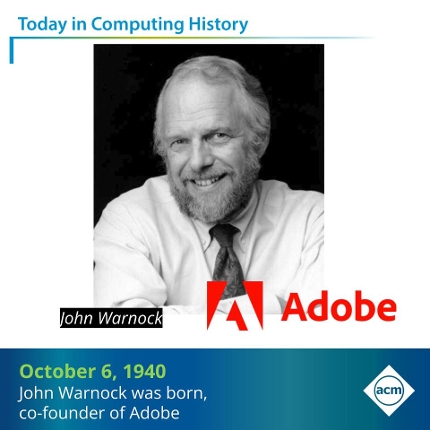
October 7, 1988
The Computer Bowl
In 1988, the very first episode of The Computer Bowl aired. This televised competition brought together the brightest minds in computing from the East and West Coasts of the United States, pitting teams of industry pioneers, engineers, and tech visionaries against one another in a battle of wits over computing trivia.
October 21, 1949
Pulse Transfer Controlling Device has been patented
In 1949, An Wang, a Chinese-born American engineer, filed a patent for a "pulse transfer controlling device," later known as the Wang Switch. This invention played a crucial role in improving the functionality of magnetic core memory, a technology that became central to early computer data storage. Computer designers had been seeking ways to record and read magnetically stored information without mechanical motion, and Wang's device helped enable the reliable use of magnetic core memory, which would later become essential in computer development.
NOVEMBER
November 5, 2007
Android Platform
In 2007, Google unveiled the Android platform, its open-source mobile OS based on Linux. It was designed to challenge Apple’s iPhone, which had launched earlier that year. The first Android phone would launch the following year, rapidly spreading Google’s OS across a global audience.
November 15, 1983
Microsoft launches Windows
On this day in Computing History, Microsoft first introduced Windows to the world. Windows was a new graphic environment and interface for computers with features like pull-down menus, tiled windows, and the ability to multitask applications. While the original version was a bit slow to gain traction, by version 3.0, Windows had gained general acceptance. Do you remember a time before Windows?
November 29, 1972
Atari released Pong
In November 29, 1972, Atari released Pong, the first commercially successful arcade game, sparking a revolution in gaming and computing. Pong was a digital take on table tennis, where players controlled paddles to hit a ball across the screen. Its simplicity and accessibility established video games as a new form of entertainment.
DECEMBER
December 8, 1947
The Eckert-Mauchly Computer Corp. is Incorporated
Early computer pioneers J. Presper Eckert and John Mauchly created one of the first computer companies, The Eckert-Mauchly Computer Corporation (EMCC). When EMCC was formed, Eckert and Mauchly were already well-known for their work on the ENIAC, the world’s first general-purpose electronic digital computer. With their new company, they set out to commercialize computing. Their vision led to the UNIVAC I (Universal Automatic Computer), the first computer designed for business applications. This step marked a shift from computing as a niche field to a transformative force in industry, government, and society.
December 10, 1815
Lady Lovelace is Born
Ada Lovelace, the first computer programmer, was born. As the daughter of poet Lord Byron and mathematician Annabella Milbanke, Ada inherited a unique blend of creativity and analytical thinking. Working alongside Charles Babbage on his design for the Analytical Engine, she wrote the first computer algorithm in her notes. Her work laid the conceptual foundation for computing as we know it today. In an era when women’s contributions to science were often overlooked, Ada’s legacy continues to inspire generations of innovators.
December 23, 1947
Transistor
In 1947, the first transistor, a small device designed to amplify or switch electronic signals, was born at Bell Labs. John Bardeen, Walter Brattain, and William Shockley invented the device to replace bulky vacuum tubes. Their transistor’s small size and efficient functionality allowed for smaller electronics to be built. It laid the groundwork for the tech innovations of today.
